
Archinect is delighted to present 5468796 Architecture's travelogue for their award-winning research project, Table for Twelve. The Winnipeg-based firm received the 2013 Professional Prix de Rome in Architecture from the Canada Council for the Arts, awarded to emerging Canadian architects with outstanding artistic potential. The $50,000 prize is supporting the firm’s worldwide travels to both strengthen their skills and expand their presence within the international architectural community.
5468796’s Table for Twelve is a series of dinner parties held at architectural epicenters around the world, in the hopes that picking the brains of local talent will help them identify the drivers behind a strong design culture. Archinect plays host to their global dispatches through this travel blog, updated upon each city’s dinner.
From 5468796:
THE TRIP
5468796 Architecture’s Johanna Hurme reflects on the sixth edition of Table for Twelve, which took place in New York City on March 12th. A full list of dinner guests can be found here.
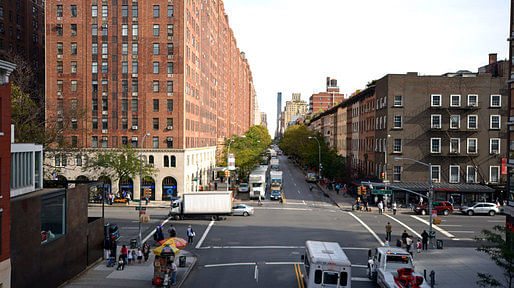
IMPRESSIONS
New York, by almost any measure, is the city of all cities. The allure of its density, diversity, bustling street life and 24-hour pulse has drawn and continues to draw people from all corners of the globe. With as many as 800 languages spoken, New York is the most linguistically diverse city in the world and over 3 million of its 8.5 million residents are foreign-born. In 2013, New York welcomed a record 54 million tourists. It is also a global hub of international business and commerce and has more than 2,000 arts and cultural organizations, as well as more than 500 art galleries of all sizes. In short, New York is the world[1] [2].
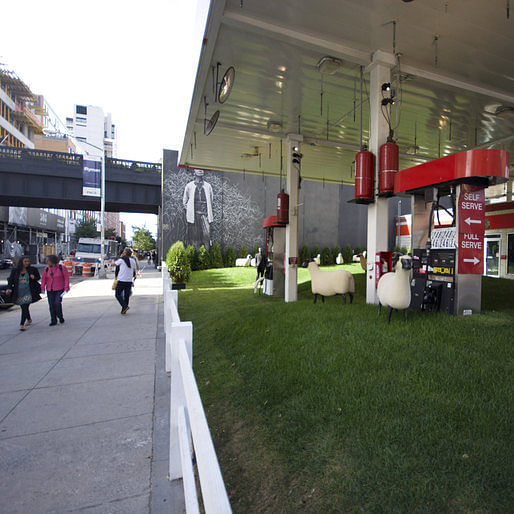
With all of its attractions, New York also lives up to its reputation as an extremely demanding environment where many professionals work long hours, endure higher than average stress levels, have longer commutes and live in less square footage per person than anywhere else in North America.
Perhaps more than in any other context, personal details like where you live, who you know, what you wear and where you had lunch are almost as important as who you are and what you stand for. On the surface, people certainly conduct themselves with an air of importance, maneuvering in the delicate social dance of accepting invitations based on who else is coming. The average New Yorker is busy, opinionated and inherently but not overtly proud of the place they call home – and rightfully so.
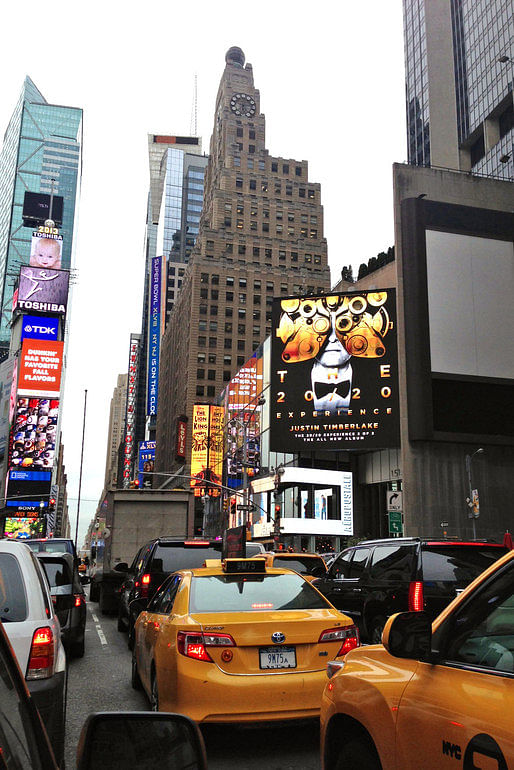
It took us some time to understand how to fit into the social calendar of people in this city – what is the right time of year? When are most fundraiser functions and other potential event conflicts held? What day of the week would people consider sacrificing for the purposes of Table for Twelve? What is the right venue that is not passé? Who should make the call to each person on the list for us to stand a chance of getting them in the room?
While we did have similar issues with Table for Twelve in other cities, somehow it seemed that New York had a whole new layer of social hierarchy that needed to be untangled before we could get to what really mattered. This courting took us on an additional 'pre-trip' in the fall to meet a few people prior to the event. Through our good friend and host Kevin Erickson (KNEstudio), we were introduced to Susanna Sirefman of Dovetail Design Strategists and to Kyle May, the co-founder and editor-in-chief of CLOG.
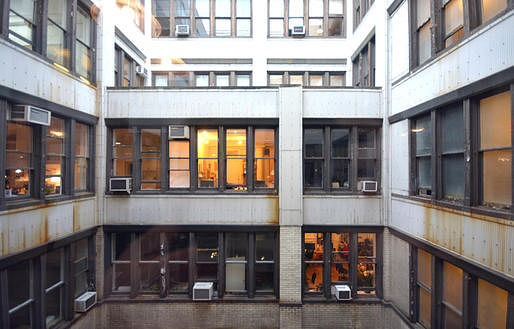
Together with Kevin, we began by pre-interviewing Rosalie Genevro and Anne Rieselbach from The Architectural League of New York to try to come to terms with the city’s complex and compelling landscape of architectural activity. At that time, the uncertainty of the upcoming mayoral election raised many questions about the fate of the city’s design culture and weighed heavily on each response. We were left unsure about the future, but also with a great appreciation for the critical work the Architectural League and other organizations do to curate and foster creative and intellectual discussion in architecture and its related disciplines.
I also managed to squeeze in the door to speak with Billie Tsien at her office on the edge of Central Park and, after one failed attempt, to pin down Eva Franch i Gilabert of Storefront for Art and Architecture for a brief interview.
As a counterpoint to everything I had considered ‘New York’, Billie served tea and spoke softly about human experience and the importance of saying no to commissions that will not give you the right opportunities. She was insightful, eloquent and very generous with her time. Entering the office, I felt a similar calmness descend over me and for a moment I was blissfully unaware of the hustle and bustle just outside the window.
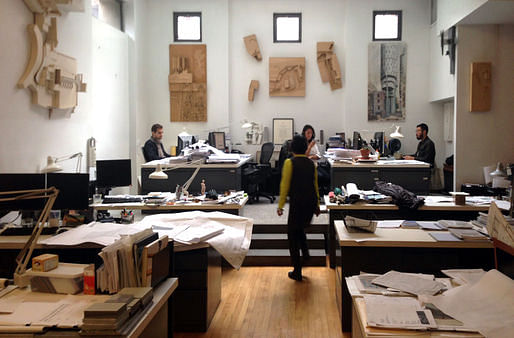
With Eva this was quite the opposite. About half an hour late, she finally flew through the door at the Storefront offices where I was waiting and quickly proceeded to tell me that the premise of the entire research project was wrong. Sticking to my guns, she then whipped out some trace and a pen and started to diagram the numerous institutions, agencies, organizations and individual practices that create architecture culture (as per our definition) and that given the sheer number of names, lines, dots and arrows on the page the task of drawing any conclusions beyond this “would be impossible.” After I asked to keep the diagram, she scribbled in the corner 'not to be published'. Sorry folks. What a ride, I loved every minute of it!
DINNER
Thanks largely to Susanna’s and Kyle's rolodexes, we were finally in a position to hold a dinner. The event took place on March 12th at DBGB Kitchen and Bar in a private dining room off the kitchen, the perfect space for our seventeen guests. Last to arrive were Lance Jay Brown (AIANY), Tami Hausman (Hausman Communications) and Michael Sorkin who were coming together from a previous event. After a brief foreword, I asked if we could all introduce ourselves and gestured to Michael next to me. After Michael tried to get away with “I’m Michael and I came with my friend Lance,” Lance suggested that we all should introduce Michael. Sure enough, almost without exception, every one of us had a previous experience with him and took a moment to recount our degrees of separation from Mr. Sorkin as we went around the the table.

The discussion shifted from “what is culture?” to city politics, to the role of government, clients and regulations to competition culture, world architecture, and why architects gravitate to New York even though there is very little room, literally and figuratively, to build. The discussion was passionate and the opinions critical of their context. The evening brought out clear personalities and perspectives, from Craig Dykers’ steady and convicted world view, to Eva’s fierce and colourful opinions, to Sorkin’s witty remarks and to those more occasional, carefully considered points made by Billie Tsien, Anne Rieselbach, Seth Wolfe (Arup) Elaine Molinar (Snøhetta), and David van der Leer (Van Alen Institute). At some point it became clear that Rick Bell (AIANY) was one of the only people around the table who was actually born in New York and had spent his entire life in the city. There seemed to be no conclusion as to whether the grass is greener on the other side when it comes to fostering architecture culture, or if the combination of positives in NYC equals fertile ground for innovation.

Lance Jay Brown also recounted how in the past (1850-1950) the government took a lead in the production of public architecture and quality public buildings were produced, compared to, in his words, “the more recent history where the government is at the ass end of this production.” Michael Sorkin remarked that the unparalleled strength of social interventions in the city compared to the rest of the United States – including public housing, hospitals and transportation – are “fundamental cultural undergirdings” of successful public architecture.
At the end of the evening, the strongest impression that stood out to us was not the politics, the mechanics or even the role of all of the players in this fascinating architectural milieu, but rather the impassioned, at times cynical and greatly critical discussion that architects engage in, and how New York as an organism draws the best from all corners of the world to the table.

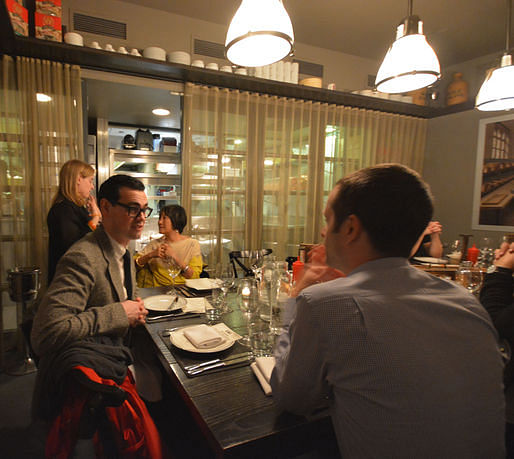
Walking around the city, we debated about the seemingly subdued quality of the work of contemporary masters; from OMA’s Prada to Foster’s Sperone Westwater Gallery to Gehry’s IAC office building or DS+R’s Lincoln Centre, the New York samples of work by some of the most recognized offices in the world were not loud or outrageous, but rather quite subtle. At first we wondered if it was the high land values and strict zoning guidelines that left little room for an architect to maneuver. After some consideration, we decided that New York does not call for one-liners and that the discerning intellectual context inspires architects who reside or practice in NYC to produce work that is more critical than perhaps other contexts would require. Creating architecture in NYC is like being a fashion student and having to design a wardrobe for Karl Lagerfeld. The expectations demand a quality outcome. One could argue that built form is being challenged in similar ways, calling for the appropriate, not over the top, fit.
In short, when the starting point is so high, it elevates even the best architects to complete their very best work. Coupled with the carefully considered, sophisticated works of the brightest stars of architecture today, NYC is an unparalleled think tank and incubator of ideas where continuous review, debate and re-generation creates an incredibly vibrant urban centre – one that the rest of the world can model itself after.
1 Comment
Fantastic idea. Sasa + Johanna gave a guest lecture when I was in undergrad and they presented themselves as two of the most intriguing architects I'd ever heard speak. Glad they are doing something highly inquisitive and original with this award.
Block this user
Are you sure you want to block this user and hide all related comments throughout the site?
Archinect
This is your first comment on Archinect. Your comment will be visible once approved.